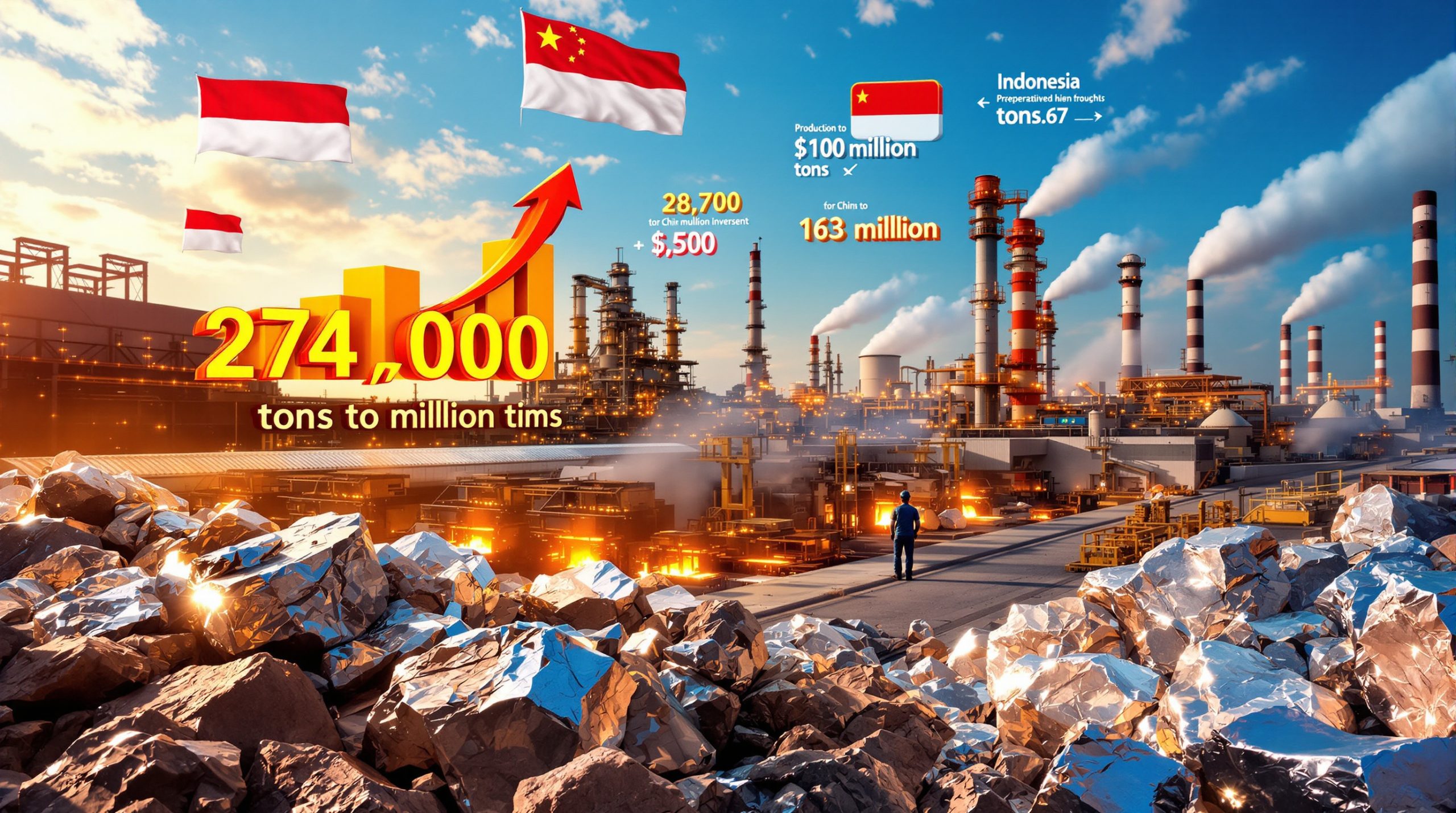The Exponential Rise of Global Battery Industry Growth
The energy storage landscape has transformed dramatically over the past five years, with global battery industry growth reaching unprecedented levels. Battery shipments exceeded 300 gigawatt-hours (GWh) worldwide in 2024, marking a remarkable 83% compound annual growth rate since 2020, according to Intertek CEA's latest market intelligence reports.
This extraordinary expansion places the battery sector among the fastest-growing technology markets globally, fundamentally reshaping how energy is stored, distributed, and consumed across multiple industries.
Market Concentration and Competitive Dynamics
Despite the massive scale of expansion, the global battery industry remains highly concentrated. Over 70% of the market share is controlled by just five major suppliers, with China-based CATL commanding 37% of the global market alone.
This concentration creates both opportunities and vulnerabilities within the supply chain:
- Economies of scale: Large manufacturers achieve significant cost reductions through volume production
- Supply chain risks: Heavy reliance on few suppliers creates potential bottlenecks
- Innovation acceleration: Market leaders drive rapid technological advancement
- Pricing power: Dominant players influence global pricing structures
The dominance of Chinese manufacturers has enabled substantial cost savings across the industry. However, it has also raised concerns about supply chain resilience and geopolitical dependencies.
Regional Policy Shifts Reshaping Global Markets
China's Anti-Involution Policy Impact
China's implementation of anti-involution policies has created significant ripple effects throughout the global battery supply chain. These regulations prevent companies from selling below cost and engaging in destructive price competition. Furthermore, they have already resulted in lithium price spikes over recent months.
The policy aims to reduce oversupply and eliminate cutthroat competition between domestic lithium mines. Consequently, this creates more stable pricing environments for manufacturers whilst impacting the broader battery raw materials landscape.
Lithium Price Volatility and Market Corrections
Despite recent spikes, lithium prices in August 2025 were 80% lower than August 2022 levels, according to Intertek CEA analysis. Nevertheless, market experts anticipate higher floor prices moving forward due to:
- Export restrictions from Zimbabwe and the Democratic Republic of Congo
- China's anti-involution policy effects
- Increased demand from expanding battery production
- Supply chain consolidation efforts
US Trade Policy Transformations
The United States is implementing comprehensive changes to its battery import policies. In addition, 83% tariffs on Chinese batteries are set to take effect in 2026. These measures are driving American battery buyers toward supply chains that comply with Foreign Entities of Concern (FEOC) regulations established in recent budget legislation.
Key Policy Impacts:
- Supply chain bifurcation: Clear separation between FEOC-compliant and non-compliant manufacturers
- Price premiums: FEOC-compliant batteries command higher prices due to limited supply
- Manufacturing shifts: Accelerated development of domestic and allied manufacturing capacity
- Technology divergence: Different cell formats emerging based on regulatory requirements
Technology Evolution and Cell Format Differentiation
Prismatic vs. Pouch Cell Dynamics
The regulatory environment is creating technical divergence in battery cell formats. Pouch cells currently carry approximately a 10% cost penalty compared to prismatic cells from similar countries of origin. This is primarily due to energy density differences.
However, this cost gap may narrow as manufacturing scales increase and economies of scale develop for pouch cell production. For instance, the choice between formats is increasingly driven by availability and FEOC compliance status rather than purely technical considerations.
| Cell Format | Cost Position | Key Advantages | Market Drivers |
|---|---|---|---|
| Prismatic | Lower cost baseline | Manufacturing efficiency | Chinese market dominance |
| Pouch | 10% cost premium | Design flexibility | FEOC compliance needs |
Alternative Chemistry Development
Beyond traditional lithium-ion technologies, the industry is exploring various alternative chemistries to address specific application requirements and raw material constraints:
- Sodium-ion batteries: Emerging for cost-sensitive applications
- Flow batteries: Targeting long-duration storage needs
- Solid-state technologies: Promising higher energy densities
- Iron-air systems: Focusing on ultra-long duration storage
Supply Chain Resilience and Geographic Diversification
Manufacturing Capacity Expansion
Global manufacturing capacity is expanding rapidly to meet projected demand growth. However, this expansion faces several critical challenges:
Infrastructure Requirements:
- Gigafactory construction timelines
- Skilled workforce development
- Raw material processing capabilities
- Transportation and logistics networks
Investment Patterns:
- Private capital flowing into manufacturing facilities
- Government incentives supporting domestic production
- Research and development funding for next-generation technologies
- Recycling infrastructure development
Raw Material Security Concerns
The concentration of critical mineral processing in specific geographic regions creates potential vulnerabilities for the expanding battery industry. Key minerals including lithium, cobalt, and nickel face supply constraints that could limit future growth.
Furthermore, the development of a battery-grade lithium refinery represents a crucial step towards addressing supply chain dependencies.
Critical Mineral Challenges:
- Geographic concentration of processing facilities
- Environmental and social governance concerns in mining operations
- Price volatility affecting project economics
- Long lead times for new mining projects
Application-Driven Demand Acceleration
Electric Vehicle Market Leadership
Electric vehicle applications continue to represent the largest demand driver for battery systems. They benefit from government incentives, emissions regulations, and rapidly improving technology performance. This segment's growth trajectory supports the overall industry expansion whilst driving innovation in pure lithium batteries innovation.
Grid-Scale Storage Deployment
Utility-scale battery installations are accelerating as renewable energy integration increases. These systems provide essential grid services including:
- Frequency regulation and grid stability
- Peak demand management
- Renewable energy integration support
- Transmission congestion relief
- Emergency backup power capabilities
Distributed Energy Resource Growth
Residential and commercial energy storage systems are experiencing significant adoption as costs decline and value propositions improve. These applications benefit from net metering policies, resilience requirements, and evolving electricity market structures.
Economic Factors Driving Market Expansion
Cost Reduction Trajectories
Battery costs have followed steep decline curves similar to solar photovoltaic technology. This enables broader market adoption across multiple applications. Manufacturing scale effects and continuous technology improvements drive ongoing cost reductions.
Cost Reduction Drivers:
- Manufacturing scale economies
- Technology optimisation
- Supply chain efficiency improvements
- Competition among suppliers
Investment and Financing Trends
Capital investment in battery manufacturing and deployment projects has increased substantially. It is supported by both private and public funding sources according to Fortune Business Insights market analysis:
- Manufacturing investments: Gigafactory construction and equipment
- Research funding: Next-generation technology development
- Infrastructure development: Supply chain and recycling facilities
- Deployment financing: Project-level funding for installations
Sustainability and Circular Economy Integration
What Role Does Battery Recycling Play?
As battery deployment scales increase, the industry is developing comprehensive recycling infrastructure to recover valuable materials and reduce environmental impacts. The establishment of a battery recycling facility demonstrates the industry's commitment to circular economy principles.
This includes:
- Battery collection networks
- Material recovery technologies
- Closed-loop manufacturing processes
- Second-life application programs
Recent developments in battery recycling breakthrough technologies are making recovery processes more efficient and cost-effective.
Environmental Impact Management
The industry faces increasing scrutiny regarding environmental impacts throughout the value chain. This spans from mining operations to manufacturing processes and end-of-life management. Sustainable practices are becoming essential for long-term market acceptance.
Future Market Trajectories and Growth Projections
Capacity Scaling Expectations
Industry analysts project continued strong growth through 2030, with global capacity potentially reaching multiple terawatt-hours annually. This expansion will require substantial investments in manufacturing infrastructure, supply chain development, and workforce training.
Technology Integration Pathways
Next-generation battery technologies are expected to enter commercial deployment gradually. They offer improved performance characteristics for specific applications whilst complementing rather than replacing existing lithium-ion technology in most cases.
Regional Market Rebalancing
The global battery industry growth trajectory may experience regional rebalancing as new manufacturing hubs develop and trade policies continue evolving. This could create more distributed manufacturing capabilities and reduce supply chain concentration risks.
Emerging Manufacturing Regions:
- North America: Policy-driven domestic capacity building
- Europe: Strategic autonomy initiatives
- Southeast Asia: Cost-competitive production alternatives
- India: Domestic market development and export potential
Navigating Industry Transformation Challenges
The global battery industry growth story represents one of the most significant energy technology transformations of the 21st century. Success in this evolving landscape requires understanding complex interactions between technology development, supply chain dynamics, policy frameworks, and market demand patterns.
Organisations participating in this transformation must develop strategies that account for rapid change. Additionally, they must build resilient operations capable of adapting to evolving regulatory, technological, and market conditions.
The next phase of industry development will likely be characterised by continued scale expansion, technology diversification, and geographic rebalancing. Consequently, this creates both opportunities and challenges for market participants across the entire value chain.
The global battery industry growth continues to accelerate, driven by technological advances, supportive policies, and increasing demand across multiple sectors. This expansion represents a fundamental shift in how energy is stored and utilised globally.
"The battery industry has entered a new phase of growth that will fundamentally reshape the global energy landscape over the next decade." – International Energy Agency
Disclaimer: Market projections and policy impacts discussed in this article are based on current industry analysis and may be subject to change due to evolving regulatory environments, technological developments, and market conditions. Investment decisions should consider multiple factors and professional consultation.
Looking for Opportunities in Battery Technology Companies?
Discovery Alert delivers instant notifications on significant ASX mineral discoveries related to battery materials and technology companies, powered by its proprietary Discovery IQ model. Subscribers receive rapid insights into actionable lithium, cobalt, and nickel discovery opportunities, positioning themselves ahead of the broader market when major mineral discoveries are announced.




